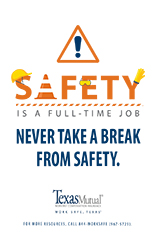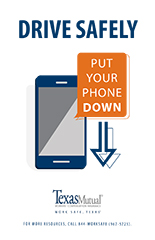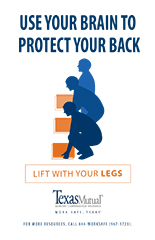Understanding your risks is an important step in improving the safety of your workplace. Using the four categories below, list what’s most likely to affect your employees in each area. Then consider whether the likelihood is high, medium or low, and how severe the risk actually is. This can help you prioritize risk mitigation and training.
1. Driving dangers – Motor vehicle crashes are a leading cause of workers’ comp claims in many industries. Whether you have fleet vehicles or employees are simply driving to and from meetings, driving poses a serious risk that training and company policies can reduce.
2. Facility and environment hazards– Slips, trips and falls are some of the most common causes of workplace injuries, but also watch for noise and vibration hazards, heat safety and general housekeeping issues.
3. Ergonomic issues– Work tasks that are repetitive, strenuous, done in awkward postures, or that put pressure on specific body parts could cause ergonomic problems. From office jobs to physical work, anyone in any job can experience ergonomic issues.
4. Chemical and biological hazards– While some businesses are more likely to be exposed to these hazards than others, every workplace could be subjected to them. From cleaning products to dangerous chemicals to bodily fluids and more, any employee could find themselves in the position to manage these substances.





